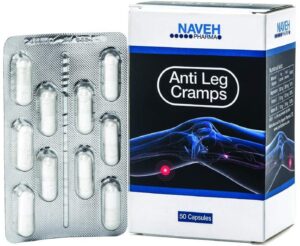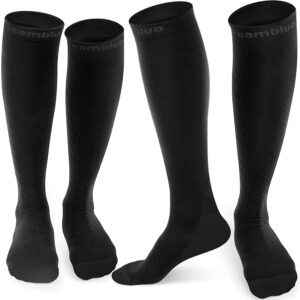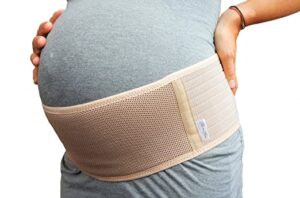Cramp is the involuntary contraction of one or more muscles. This usually affects the calves and feet in pregnancy.
Symptoms:
-
A sudden sharp or tight feeling in the calves or feet.
-
Pains / tightness may last just a few seconds but can last up to 10 minutes.
-
You may experience pain after the cramp resolves for up to 24hrs.
-
Cramp is usually worse at night.
-
Cramp is often worse in the 3rd trimester of pregnancy.
-
Cramps usually disappear once baby arrives.
Causes:
-
Up to 50% of ladies get leg / feet cramps during their pregnancy and it is a normal symptom.
-
Changes in metabolism.
-
Changes in hormones.
-
Changes in amounts of fluids in the body.
-
Changes to exercise regimen.
-
Dehydration.
-
Electrolyte or vitamin deficiencies.
Here is what the evidence says about the treatment options:
Magnesium – THIS study found that oral magnesium supplements can improve the frequency and intensity of pregnancy‐induced leg cramps. Always ask your midwife or pharmacist before taking any additional supplements. We found THESE supplements on Amazon that came with good reviews and stated that they were specifically for leg cramps in pregnancy.
Yoga – evidence suggests that yoga can have a positive impact when it comes to pregnancy symptoms including leg cramps. The evidence shows that prenatal yoga may help reduce pelvic pain and help to improve mental health conditions like stress, depression, anxiety that can be associated with pain in pregnancy. Yoga has also been shown to help with pain and pleasure at the delivery of the baby and with postnatal outcomes such as lower delivery times and obstetrical complications.
There are lots of Online Yoga programmes available, have a look at our Top 5 here (and why we love them)! You can also read our blog on how yoga can help in other ways.

Compression stockings – There is no evidence found in support of the use of stockings for cramp alone, but please see our section on swelling and varicose veins for more details on the benefits of using compression stockings in pregnancy.
Pregnancy support belts – there is little evidence supporting the use of pregnancy belts when it comes to cramp in pregnancy, this is not to say that they are ineffective but the research just hasn’t been done. It is theorised that because the support belt helps to decrease pressure on the pelvis, this helps circulation throughout the legs and can reduce the episodes or severity of cramp being experienced.
There are currently no studies to show which support belts might work best for cramp (or for how long you should be wearing them), so we have put together our top 5 choices (here) to help guide you based on what they can help with and what we like about them.
Reflexology – We couldn’t find any large scale studies to back the use of reflexology when it comes to leg cramps. This isn’t to say that it won’t work, it just hasn’t been studied in detail yet.

What symptoms to watch for:
If you have any of the following symptoms see your midwife or GP straight away:
-
Throbbing or cramping pain, swelling, redness and warmth in one leg.
-
Sudden breathlessness, sharp chest pain (may be worse when you breathe in) and a cough or coughing up blood.
-
1 in 1,000 pregnancies may develop a blood clot, this clot can lodge in the leg vein and that will need treatment straight away.
If you are getting cramps very regularly or can see some swelling and redness and feel tenderness in your leg, contact your GP / midwife immediately (alternatively, call 111).



